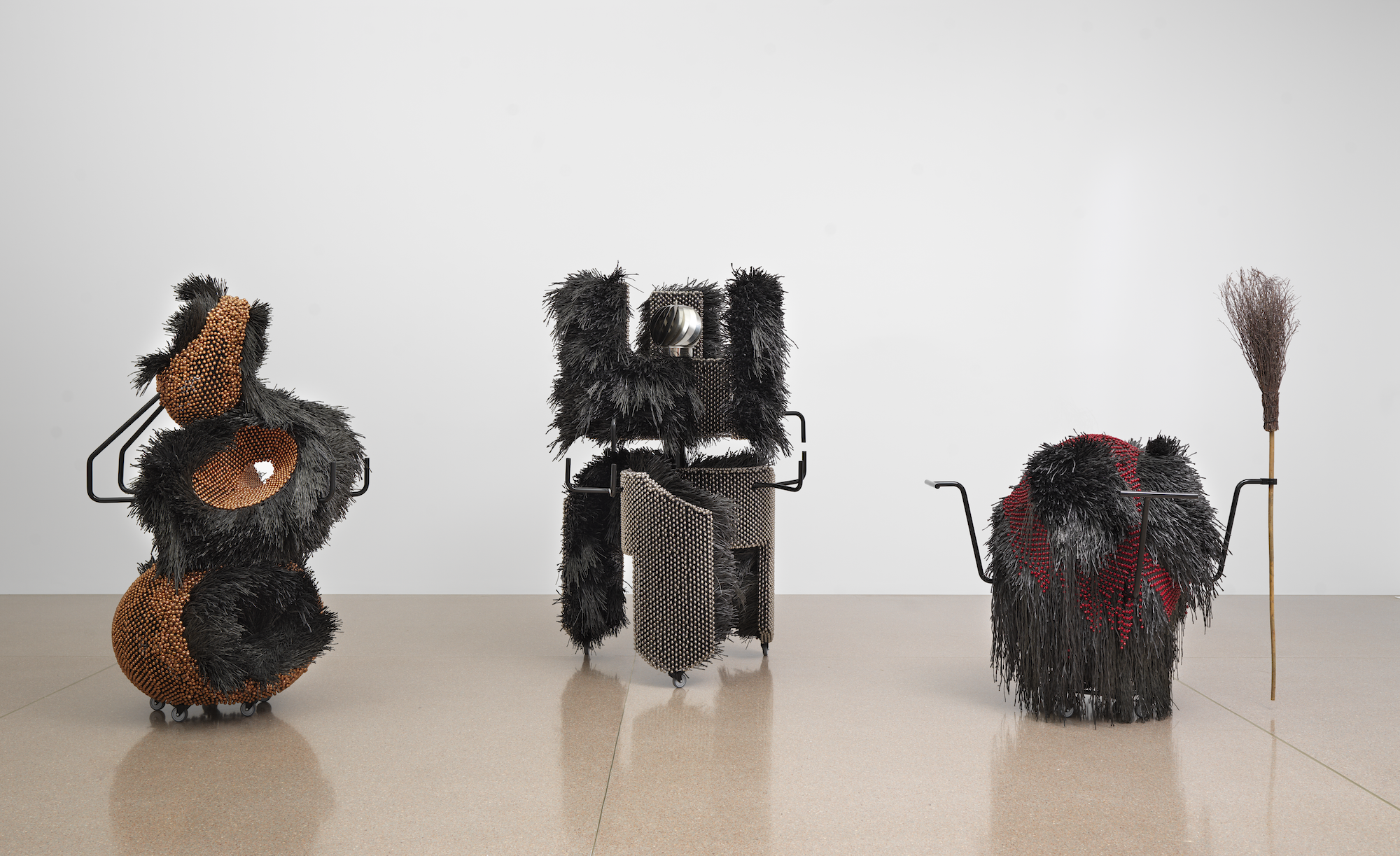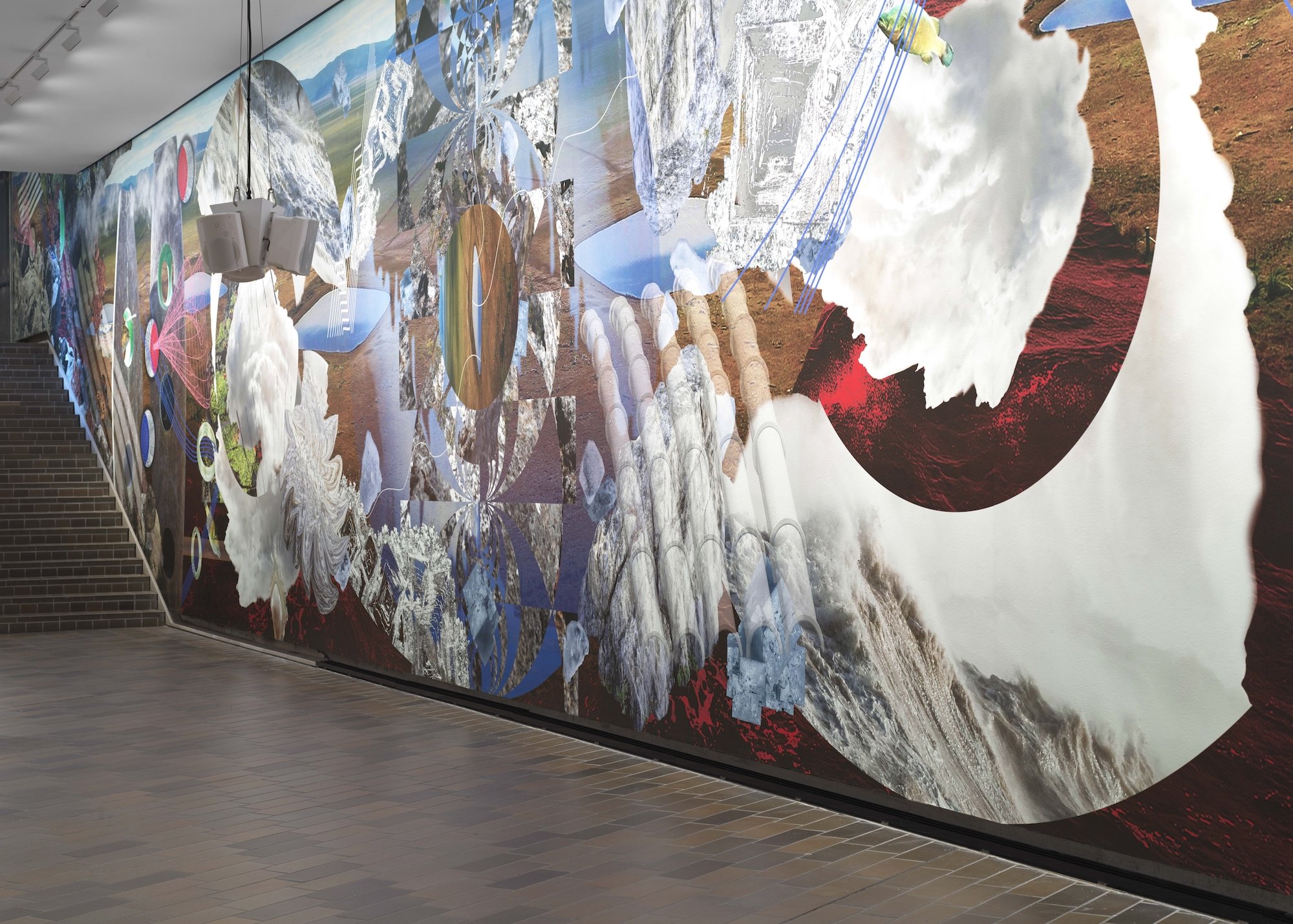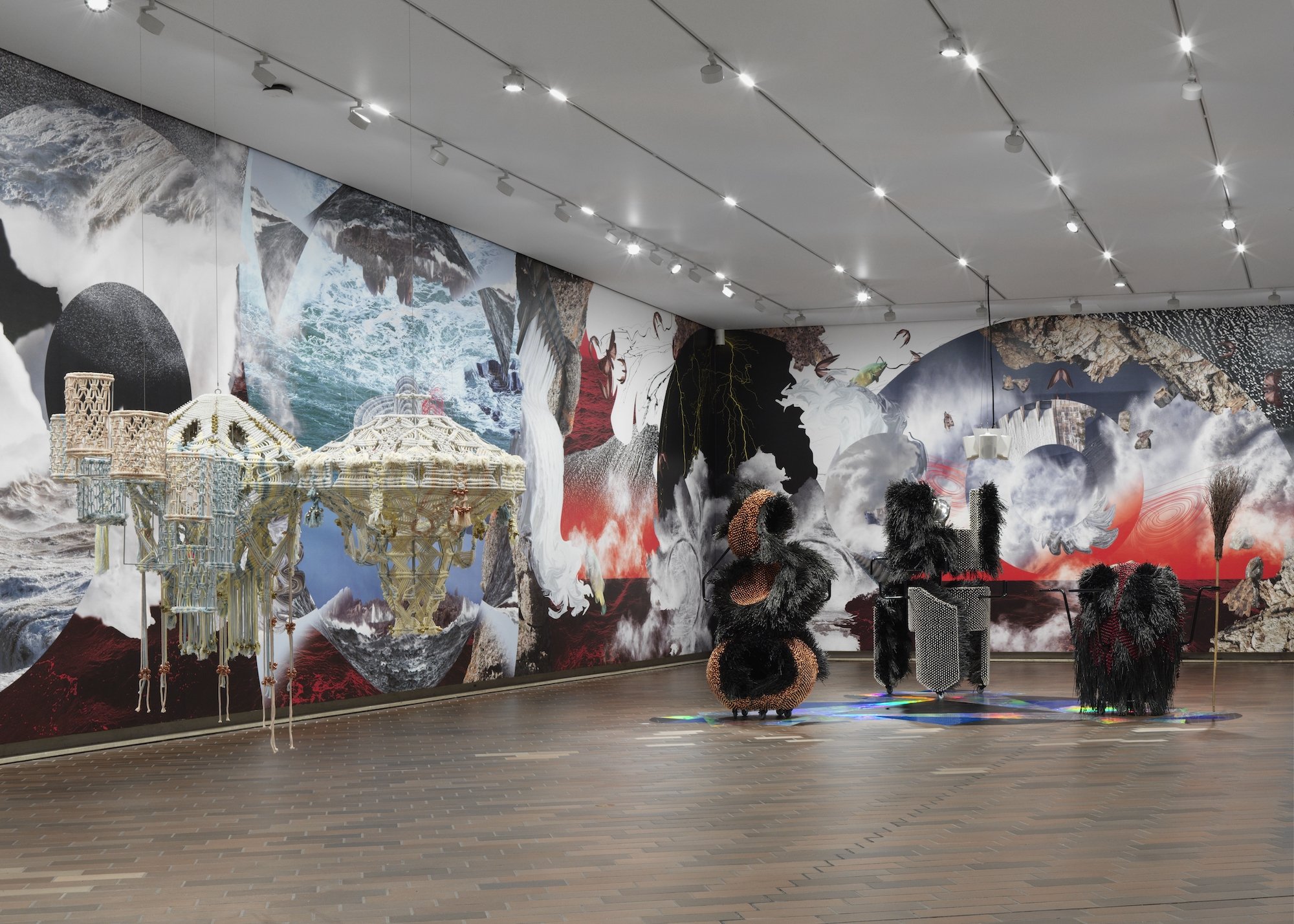Imagined encounters: Haegue Yang at the NGA
/‘Changing From From To From’ celebrates the National Gallery of Australia’s ongoing commitment to gender equality, through the presentation of an intimate yet intellectually and visually impressive body of work by renowned South Korean contemporary artist Haegue Yang. Based in Seoul and Berlin, Yang’s borderless approach to her practice traverses geographic regions, artistic genres and historical and cultural contexts resulting in a fluid and ever-evolving output.
Curated by Russell Storer, Head Curator of International Art, and Beatrice Thompson, Associate Curator of Asian and Pacific Art, the exhibition comprises four key works, two of which have recently been acquired for the collection. Mobile sculptures, digital wallpaper and a sound piece – all rich in material contrasts – present different modes of Yang’s practice. The title of the exhibition is sourced from a poem by the late conceptual artist Li Yuan-chia and captures Yang’s ongoing exploration of transformation, migration and abstraction – both as a language and means of open-ended interpretation. At the media preview in late May, Yang further elaborated during a conversation with me. She referred to concepts of ‘movement and vibration’ and acknowledged the starting point of the exhibition was ‘the changing nature of water as a central motif’.
Mobility and transmuting forms, histories and memory, and the permeability of these concepts, have long been an interest in Yang’s meticulous research and practice. Large-scale sculptures and installations often comprise disparate materials from industrially manufactured objects such as venetian blinds or steel frames juxtaposed with handcrafted techniques of knitting or weaving, to straw, sound or scent and, recently, artificial intelligence. Objects are often intended to be moveable or enacted with choreographed invigilation; the tension of a sculpture moving through space takes on a performative human quality.
The installation Sonic Intermediates – Three Differential Equations (2020) individually represents sculptural portraits of three pioneering modern artists. Here, Naum Gabo, Barbara Hepworth and Li Yuan-chia are shamans acting as intermediaries between the human and spirit worlds. These anthropomorphic sculptures – steel-framed intricate objects made of mesh, bells, plastic twine resembling fur, and zip ties – jingle and vibrate when playfully activated by invigilators. Yang described these works as ‘historical creations … honouring not yet happening, imagined encounters’. Yang’s exploration of migration, energy (nature and people) and rituals come to life when these passive sculptures become active.
Developed using sophisticated artificial intelligence, Genuine Cloning (2020) comprises two interwoven sound elements – a replica of Yang’s voice whispering a pre-written script and a partial recording of the 2018 DMZ Summit when then-president Moon Jae-in and North Korean leader Kim Jong-un held a private conversation. Amusingly, this historic interaction was subdued by the sounds of ambient birdsong in the nearby nature areas. The audio permeates the exhibition space and spans topics including language, weather systems, the naming conventions of typhoons, and observations on life and ethics. In conversation, Yang observed that the voice, when listened to closely, is ‘cynical, cold, not human’ in its construction.
Continuing Yang’s fascination with natural phenomena and extreme changes of weather, Non-Linear and Non-Periodic Dynamics (2020), an immersive wallpaper that wraps the exhibition space, uses technology to layer imagery and motifs. Inspired by Edward Lorenz’s mathematical modelling of chaotic weather patterns, the work was made in consultation with Ngambri Elder Paul Girrawah House to incorporate local motifs including the kurrajong tree, bogong moths and the nearby lakes George and Burley Griffin. Acknowledging her position as an outsider, since her first visit to the Australian desert in 2017, accompanying artistic director Mami Kataoka on a research trip for the 21st Biennale of Sydney, Yang’s desire to connect to place and deepen her understanding of Indigenous culture and Country is authentic and stems from her rigorous approach to research. Visually dynamic and energetic in its shifting and enveloping quality, the wallpaper belies the flatness of its digital origins and wall-based installation. Intentionally, the audience is just as swept up in the movement, or vibration of the piece, as the chaos theory represented within the work.
Each installation is as considered as the artist herself. In conversation, Yang speaks eloquently on topics including climate change and the formation of cyclones, migration, future projects and previous visits to Australia. Yang is part of a generation of groundbreaking contemporary artists from South Korea. Research-based and often esoteric concepts could result in an alienating output, however this is simply not the case for Yang. Mesmerising in their detail, complexity and structure, the work and conversation remain with you long after.
Sarah Hetherington, Kamberri/Canberra
Curated by Russell Storer and Beatrice Thompson, ‘Haegue Yang: Changing From From To From’ is on display at the National Gallery of Australia until 24 September 2023.





















